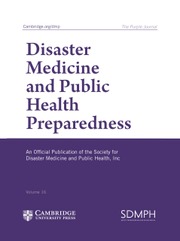No CrossRef data available.
Article contents
Energy and Nutrient Evaluation of Foods Served in Turkish Red Crescent Field Kitchens after the Kahramanmaraş Earthquake
Published online by Cambridge University Press: 17 March 2025
Abstract
After the Kahramanmaraş earthquakes, the study aimed to assess the nutritional quality, energy, and macronutrient content of meals from field kitchens, evaluating their capacity to meet recommended daily intakes in the region.
The contents of morning, lunch, and evening meals prepared by the Turkish Red Crescent in field kitchens in 10 provinces were collected on the second day of the earthquake and 3 times at 1-month intervals: February 7, March 7, and April 7.
During the Kahramanmaraş earthquakes, 570 public institutions and/or non-governmental organizations provided food assistance at 2.342 assembly points in 10 provinces on February 7, March 7, and April 7. In the aftermath of the Kahramanmaraş earthquakes, the Turkish Red Crescent provided meals to over 4.8 million people at 10 different locations for a period of 3 days. Starting from the second day after the earthquake (February 7), when food services were regularly recorded at nutrition service points, the percentages of macronutrients covering total energy were found to be within the normal range.
To promote the health of disaster survivors, it is important to improve the balanced RDAs for energy and macronutrients and ensure compliance with national dietary guidelines.
Keywords
- Type
- Brief Report
- Information
- Copyright
- © The Author(s), 2025. Published by Cambridge University Press on behalf of Society for Disaster Medicine and Public Health, Inc
Footnotes
The submitted article is not published elsewhere and is not evaluated by any other publication.
This article was produced from the thesis work.


